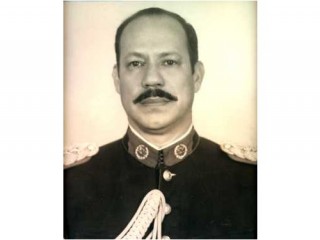
Julio González biography
Date of birth : 1876-09-21
Date of death : 1942-03-27
Birthplace : Barcelona, Spain
Nationality : Spanish
Category : Historian personalities
Last modified : 2011-08-24
Credited as : Artist sculptor, Standing Figure , Gonzalez's Head
The Spanish sculptor Julio Gonzalez pioneered welded iron constructions and gave the medium an unprecedented expressiveness and range.
Julio Gonzalez was born on Sept. 21, 1876, in Barcelona. He learned his craft from his father, a goldsmith and sculptor. Gonzalez exhibited sculpture in metal at the Barcelona International Exposition in 1892 and at the World's Columbian Exposition in Chicago in 1893. He studied painting as an evening student at the Barcelona School of Fine Arts.
In 1900 Gonzalez moved to Paris, where he renewed his acquaintance with Pablo Picasso. At this time Gonzalez devoted himself to painting. His brother Joan, also a painter, died in 1908. Gonzalez, grief-stricken, abandoned all artistic activity for many months. When he recovered, he returned to his first love, sculpture, but his work was intermittent and dispirited. Anguish over his brother's death had abated, but Gonzalez was haunted by it, and he also suffered from a sense of personal inadequacy.
In 1926, when he was approaching 50, Gonzalez acquired sufficient confidence to begin working full time. His sculpture of the next 4 years was cubistic, modest in scale, and reminiscent of the so-called transparencies of Jacques Lipchitz. In 1930 Gonzalez began to instruct Picasso in welding. The collaboration of Gonzalez with perhaps the most powerful innovator in modern art led, as one would expect, to a vitalization of his own artistic conceptions. Gonzalez's Head (1934) and Standing Figure (1932) show Picasso's influence. These works are linear in conception, with forms and attitudes as agile and intense as a grass-hopper's body, and yet they are totally expressive of welded iron.
Gonzalez became a member of the constructivist group Cercle et Carre at this time, and in 1934 he exhibited with the Abstraction-Creation group. Some of his last works, such as Woman Combing Her Hair (1936) and Monserrat (1936-1937), have expressionist characteristics and a monumentality unlike anything he had done before. Monserrat, which represents the starkly simple figure of a woman with a scarf on her head, is essentially naturalistic in terms of proportion and sense of bulk despite the meagerness of descriptive detail. In a sense, this sculpture, thought by many to be his finest, is uncharacteristic, for Gonzalez combined abstraction and surrealism in his two versions of Cactus Man, spiky, gesturing, anthropomorphic vegetations.
During World War II, because of war shortages, Gonzalez was forced to abandon welding and instead model in plaster. He executed a number of sketches for Monserrat II, but he finished only the head: it is that of a woman, her hair covered by a bandana. She appears to be crying out as if confronted by an unspeakable atrocity. This piece was his last work. He died in Paris on March 27, 1942. Though his output was small, his influence on such sculptors as David Smith, Theodore Roszak, Reg Butler, and Lynn Chadwick is testimony to the eloquence of his art.


















